Pieces from the Belitung Shipwreck exhibition are now displayed at the New York Asia Society Museum. This is the first time the treasure has travelled to America after a botched attempt to display it at the Smithsonian Institute in Washington D.C in 2011.
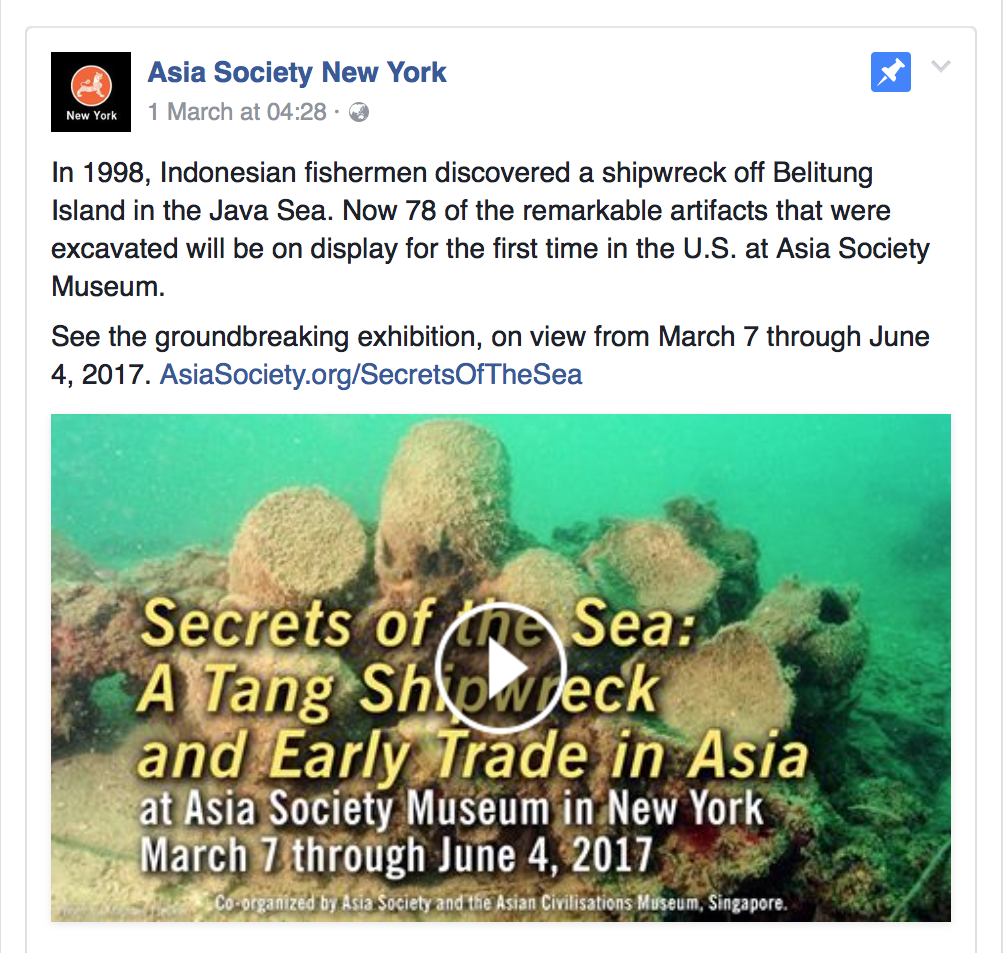 Screenshot via Facebook.
Screenshot via Facebook.
Intriguing as this drama is, we first turn to a primer on the multi-million dollar shipwreck treasure.
What is the Belitung Shipwreck?
The Belitung Shipwreck (also called the Tang Shipwreck) is a 9th century Arab vessel that was found off the coast of - you guessed it - Belitung island, near Sumatra in 1998.
Discovered by Indonesian divers who were looking for sea cucumbers, the wreck was a stupendous find; it contained the largest collection of Tang Dynasty artefacts ever recovered.
The vessel was likely to be transporting ceramics and luxury goods such as gold and silver items, possibly en route from China to the Middle East when it sank off Belitung.
How precious were these goods? Take a look at these:
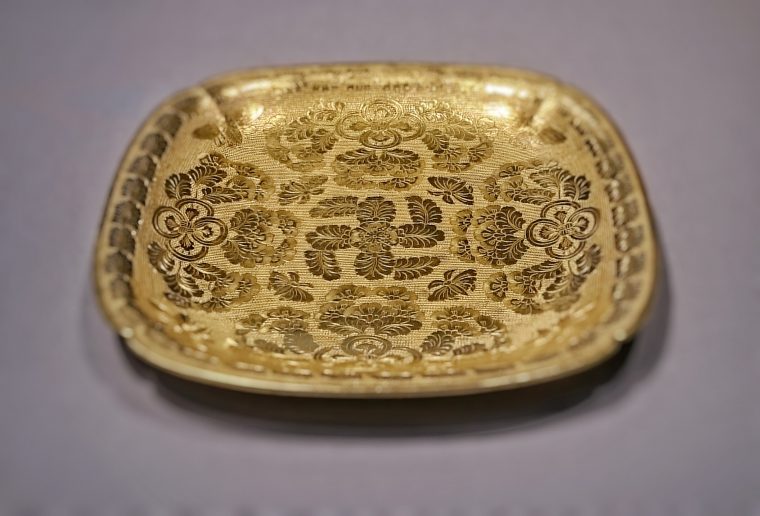 Tang dynasty square dish with insects, flowers, and knotted ribbons. Taken at Asian Civilisations Museum by Joshua Lee.
Tang dynasty square dish with insects, flowers, and knotted ribbons. Taken at Asian Civilisations Museum by Joshua Lee.
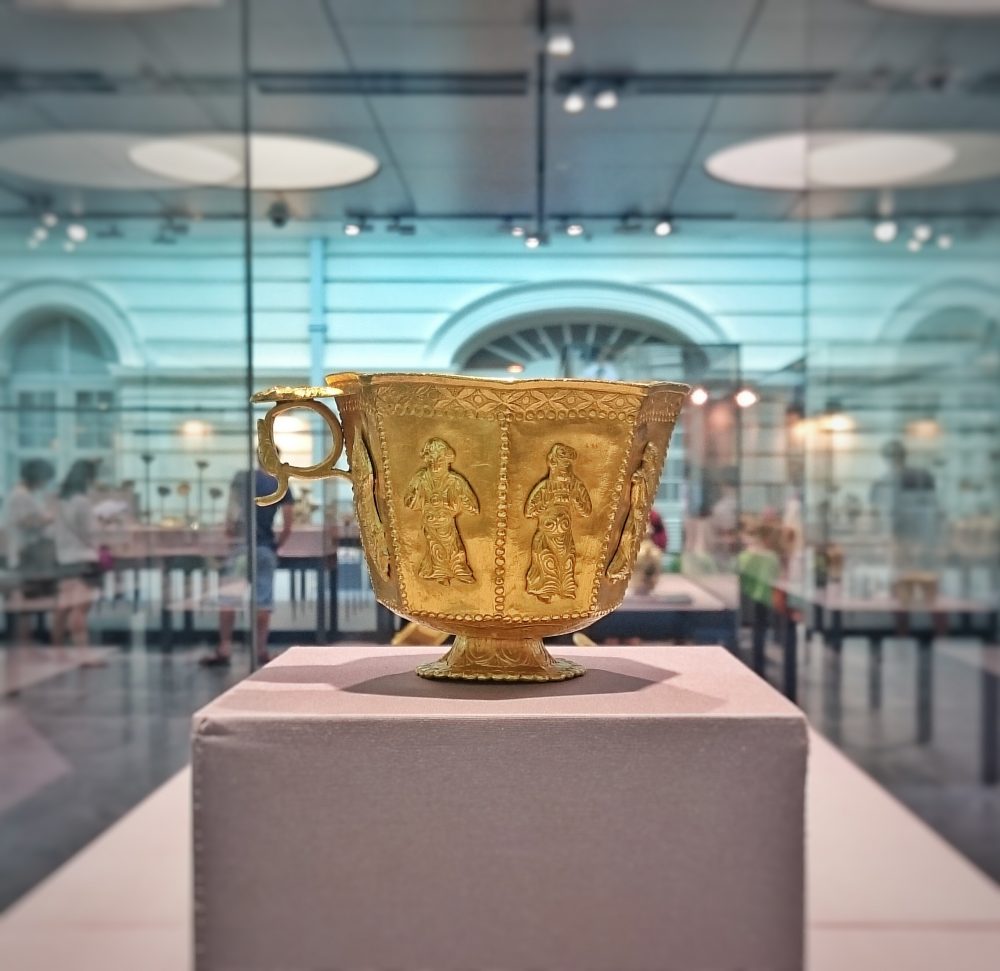 Gold cup adorned with Central Asian figures. Taken at Asian Civilisations Museum by Joshua Lee.
Gold cup adorned with Central Asian figures. Taken at Asian Civilisations Museum by Joshua Lee.
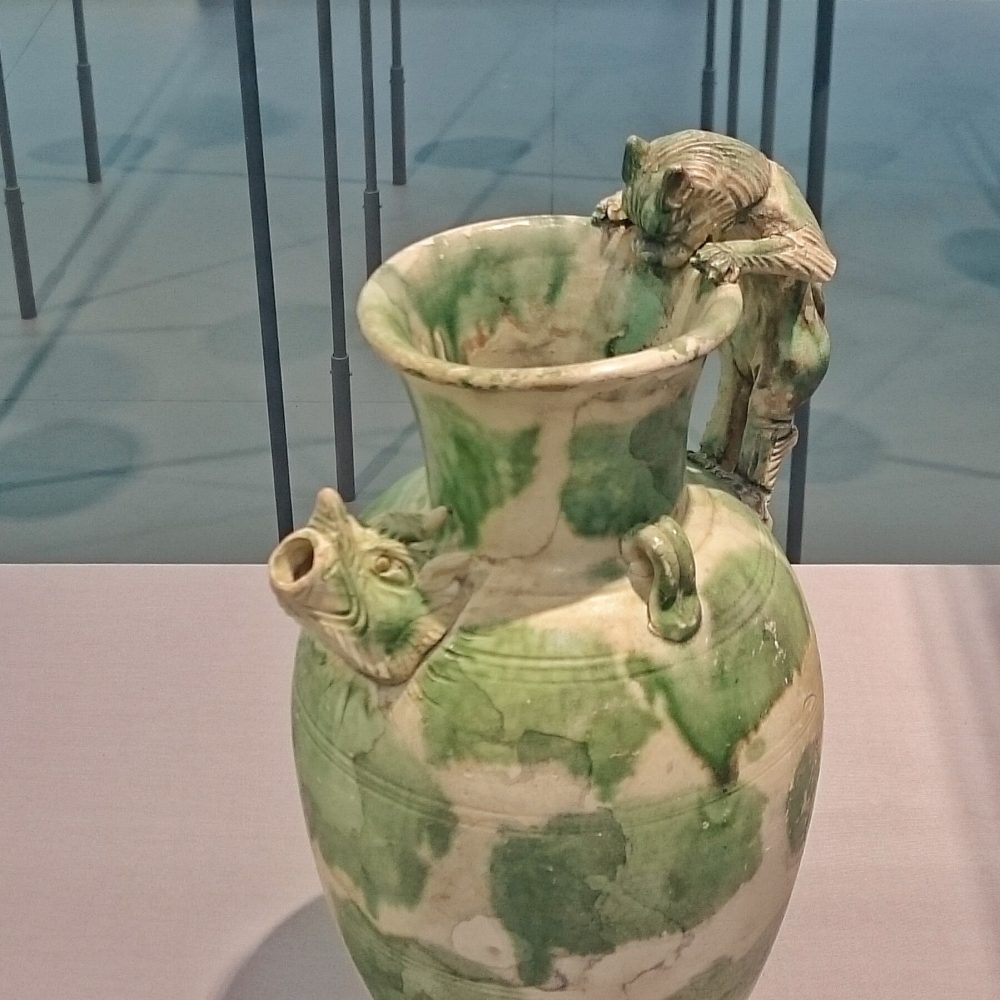 Ceramic jug with cat handle. Taken at Asian Civilisations Museum by Joshua Lee.
Ceramic jug with cat handle. Taken at Asian Civilisations Museum by Joshua Lee.
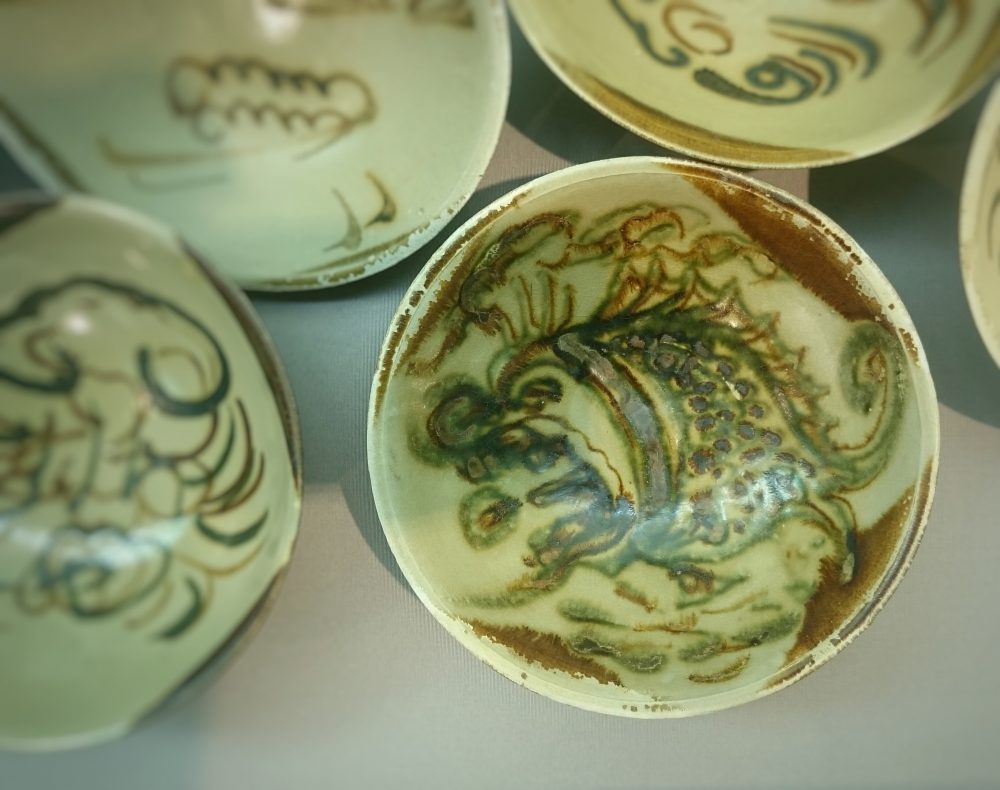 Green ceramic wares. Taken at Asian Civilisations Museum by Joshua Lee.
Green ceramic wares. Taken at Asian Civilisations Museum by Joshua Lee.
Its discovery was a testament to Singapore's important position in the global maritime network. This is a possible reason why the Singapore government, with the help of the Khoo Teck Puat estate, acquired the bulk of the shipwreck cargo at the cost of a whooping USD$32 million.
From ship to wreck?
As the world came to know about the Belitung shipwreck, an exciting drama worthy of its hefty price tag began to unfold.
When the Smithsonian Institution’s Freer/Sackler Galleries announced in 2011 that they would be showcasing the Belitung Shipwreck treasures, archaeologists went up in arms, demanding that the museum retract the invitation.
Excavation done not according to 'academic standards'
They were furious that the excavation of the Belitung wreck was conducted by a commercial salvage company, Seabed Explorations (engaged by the Indonesian government), as opposed to an academic team which would have followed the stringent Western standards of underwater excavation.
Additionally, critics argued that allowing commercial companies to conduct excavations encourages plundering and looting. Further, by agreeing to display the artefacts, the museum would be indirectly condoning the 'plundering' of ancient artefacts.
Excavation process was admirable considering external circumstances
On the other hand, Seabed Explorations claimed that they did the best they could to excavate the wreck, while under the pressure of a volatile political climate and the danger of private looters.
After the excavation was completed, Seabed Explorations sent the cargo to Germany and New Zealand to be conserved, before selling the bulk of the cargo to the Singapore government via the Sentosa Leisure Group.
The company also insisted that the cargo be bulk sold in its entirety, instead of auctioning it off piece by piece to the highest bidder. Also, the company commissioned and financed a research report and a publication on artefacts from Changsha that were found in the wreck.
The excavation of the shipwreck by a commercial company was also completely legal under Indonesian laws. Because of rampant looting of cultural artefacts in the past, Indonesia had passed laws to allow commercial companies to salvage shipwrecks to prevent them from falling into the wrong hands.
So what now?
At the end of the day, the real issue is one of ethics. While conservation of heritage and cultural artefacts should be done with procedural integrity, reality can sometimes force us to take a different but necessary approach.
By encouraging all parties - governments, academics, and commercial companies - to collaborate and reach a compromise, everyone will benefit from having greater access to our history and heritage.
That's something to appreciate the next time you visit the Belitung Shipwreck exhibit at the Asian Civilisations Museum.
Fascinated by archaeology in Singapore? Read this:
More archaeological digs to uncover our past could be coming along
Top photos taken at the Tang Shipwreck exhibition at the Asian Civilisations Museum by Joshua Lee.
If you like what you read, follow us on Facebook and Twitter to get the latest updates.
If you like what you read, follow us on Facebook, Instagram, Twitter and Telegram to get the latest updates.
